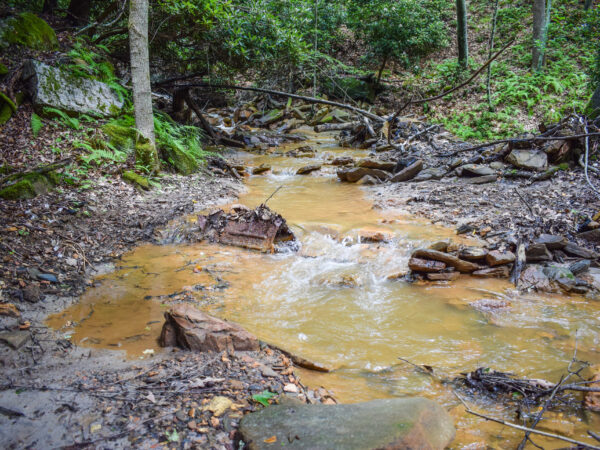
By Lester Graham, Michigan Radio
The Great Lakes News Collaborative includes Bridge Michigan; Circle of Blue; Great Lakes Now at Detroit Public Television; and Michigan Radio, Michigan’s NPR News Leader; who work together to bring audiences news and information about the impact of climate change, pollution, and aging infrastructure on the Great Lakes and drinking water. This independent journalism is supported by the Charles Stewart Mott Foundation. Find all the work HERE.
An environmental group says a Michigan plan to reduce nutrient pollution of Lake Erie is “lackluster” and “won’t work.”
The Michigan Environmental Council said Governor Gretchen Whitmer’s Adaptive Management Plan to Reduce Phosphorous Loading Into Lake Erie relies too much on voluntary cooperation by farmers.
“They’re reimbursed or cost-subsidized to implement these practices which may or may not be effective on their particular farm, depending on their particular drainage and the hydrology of the area,” said Megan Tinsley, Water and Agriculture Policy Manager for the council.
The plan expands upon a previous Michigan effort to reduce nutrient runoff. It’s similar to one in Ohio. Scientists monitoring progress there have said the plan is not working well: The net result is that the amount of phosphorous getting into streams that feed the western basin of Lake Erie is almost unchanged.

It’s a problem because phosphorous contributes to toxic cyanobacterial blooms. Some years the expanse of the blooms covers large areas of Lake Erie and threatens drinking water supplies, particularly Toledo’s.
“If it’s not working in Ohio, why do we expect that it would work here,” Tinsley asked.
She said it makes more sense to give farmers some kind of credit for not using problem fertilizers such as animal manure at all.
In a news release this week, the Chief Policy Officer for the environmental council, Charlotte Jameson, said “Pollution from agriculture in Lake Erie is the single most visible threat to any of the Great Lakes. The Whitmer administration’s Lakes Erie plan flies in the face of their claim that they prioritize clean water.”
Tinsley also listed other suggestions from the environmental council:
- Fund the construction of wastewater treatment plants to deal with some of the waste from animal feeding as part of the water supplemental bill (SB565) that was passed by the Senate but is still to be considered in the House.
- Purchase farmlands currently contributing to phosphorus loads, taking them out of production and placing them into conservation programs.
The state department of environment, great lakes and energy “did put forward more restrictions on the spreading of manure” in 2020, but the rule is being challenged by the state farm bureau in court. As a result, Tinsley said in a follow-up email, “We have not seen any improvements materialize from that yet.”
You can find the Whitmer administration’s comments about the plan in a previous story here.
Catch more news on Great Lakes Now:
For the first time, “rock snot” nuisance algal blooms found in Lower Peninsula trout stream
More people are worried about the health of the Great Lakes, according to poll
Featured image: Lake Erie turns a bright green as toxic cyanobacterial blooms across large portions of the lake’s western basin. (Tom Archer/Michigan Sea Grant)




